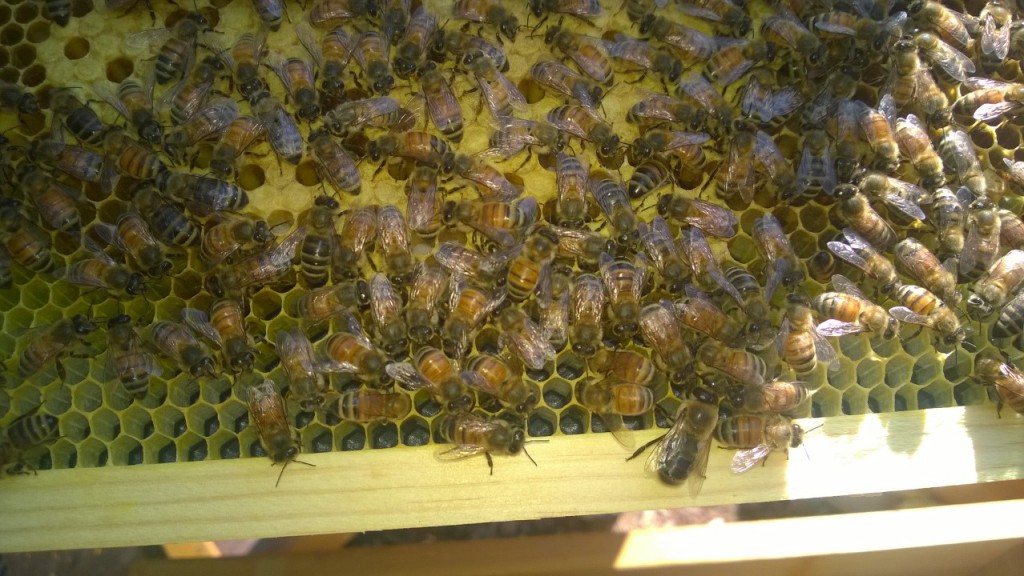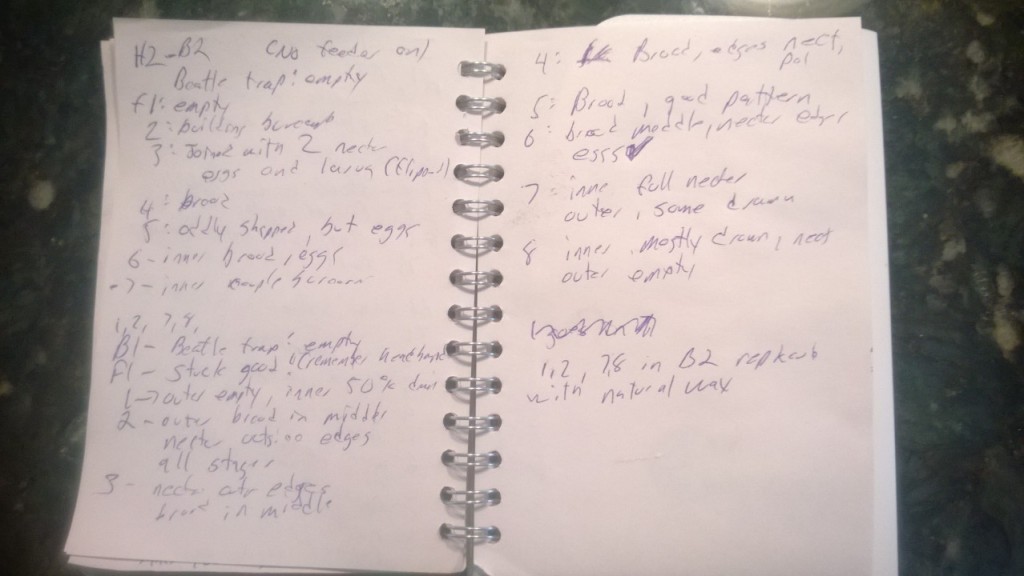Teamwork
As the hives grow and things start happening, I’m really glad we started off on the right foot and have been taking good notes. Well…let me rephrase that, Rob is the note-taker while I dictate what I’m observing as I inspect each frame. This joint team effort is really paying off as you can see:
Here, he’s recorded a frame-by-frame (“F1, F2” etc) description of brood pattern (whether it’s eggs, larvae, capped, or not), and how much pollen and nectar stores there are etc. If we see the queen, it’s noted. Then everything is transcribed into a great little online hive management system called Hive Tracks which allows us to look at past inspection notes if we need to remember when for example, we stopped feeding, and can correlate that to observations on hive population or strength, and whether they are drawing comb etc. This definitely appeals to the scientist in me 😉
Rob is also the one who deserves all the credit for the great photos of the bees I’ve posted here! Here’s a couple great shots he took of some drone brood cells and a drone (Morty!)on the edge of a frame.

There are 3 drone cells along the bottom edge of this frame. They bulge outward (“bullet shaped”) because the drones are physically larger and need more room during the final developmental stages.

Drone (boy bee): just right of center on this frame. He’s about 1/3rd bigger than the worker bees, with a darker abdomen and extra large eyes.
Besides being note-taker and photographer extraordinaire, Rob has also proved to be the voice of reason when I get flustered over spur-of-the-moment decisions regarding what action needs to be taken based on the inspection findings. Sometimes I’m elbow deep in the hive and have decision-making paralysis. He’ll come to the rescue and calmly say, “well no, you probably shouldn’t move that frame there…” or “maybe you should give them a little puff of smoke, they’re getting a bit agitated” and so on. An extra pair of eyes to search for the queen certainly helps too! So to Rob, I say,”Thanks honey!”
E


I knew you 2 would bee a good team many years ago!!!
Yes! He has always been the voice of reason for me 😉
(btw, nicely done on the pun)